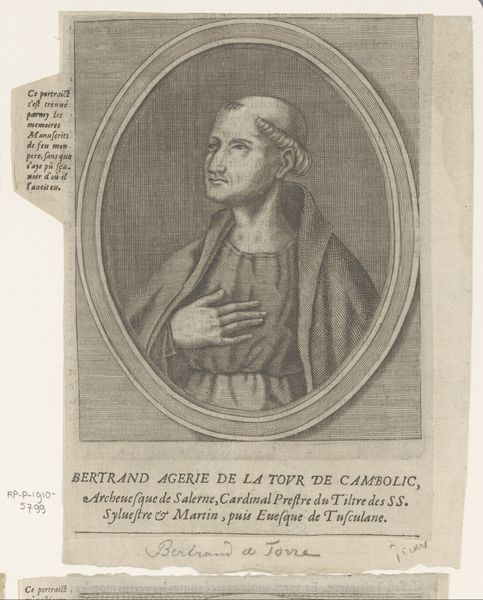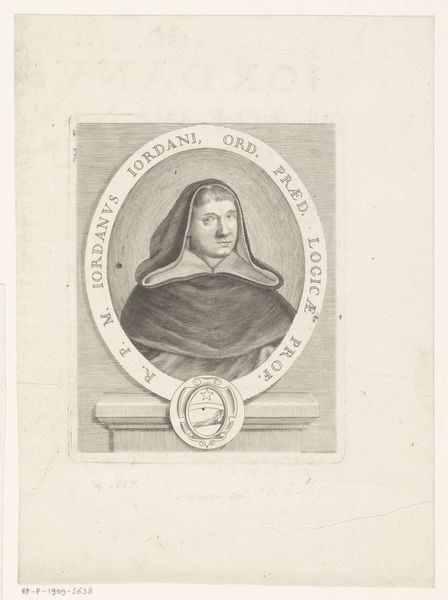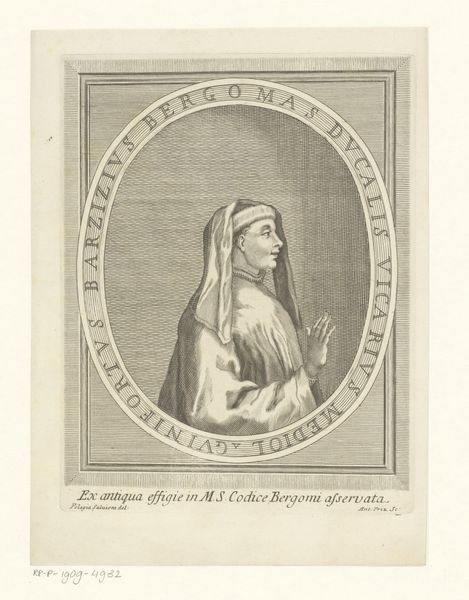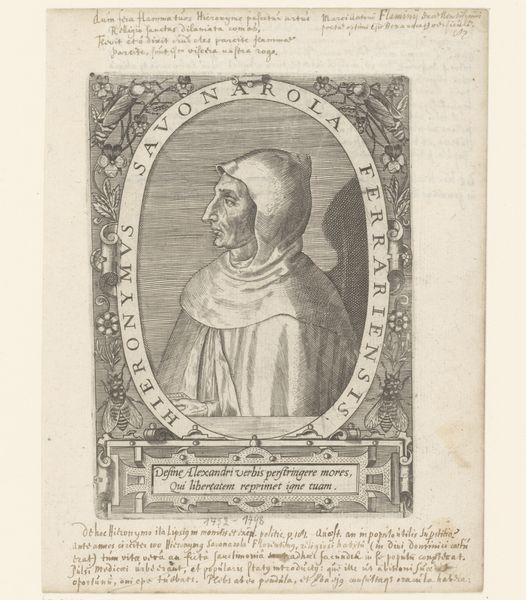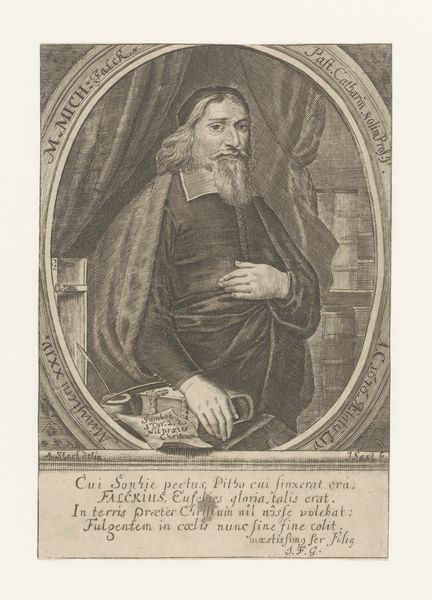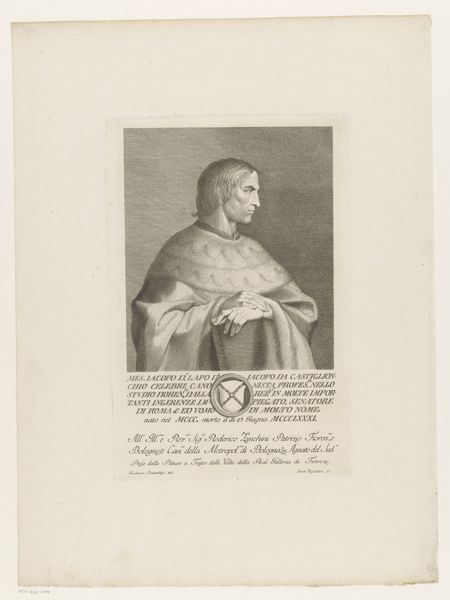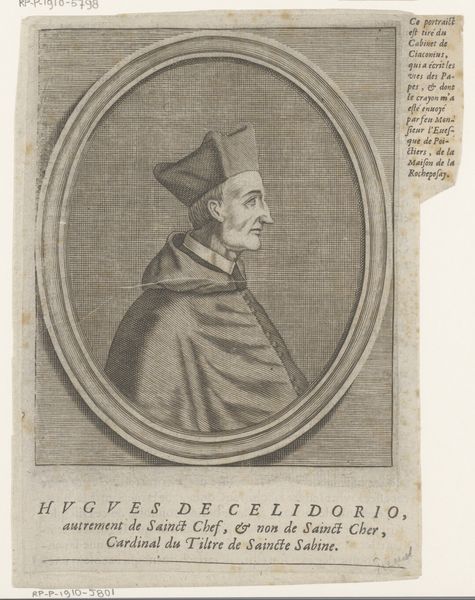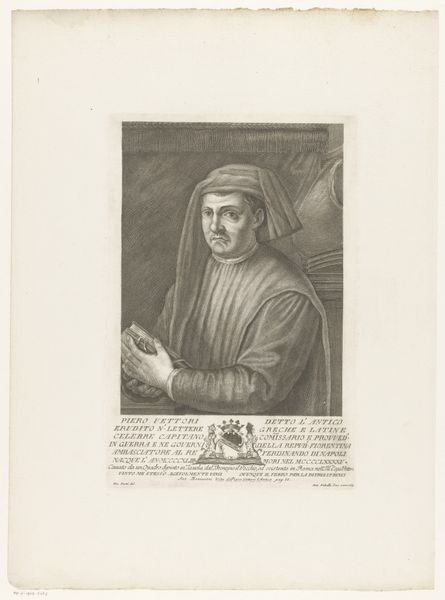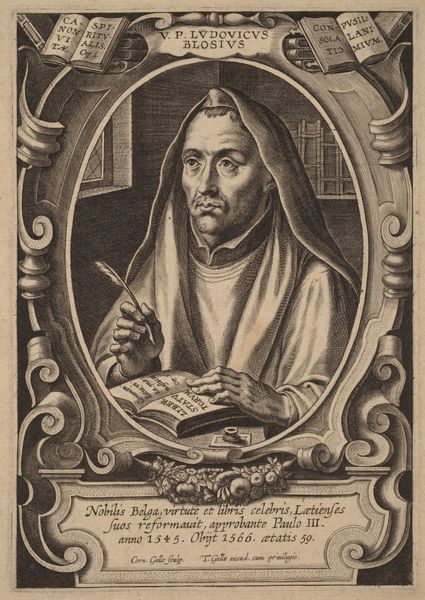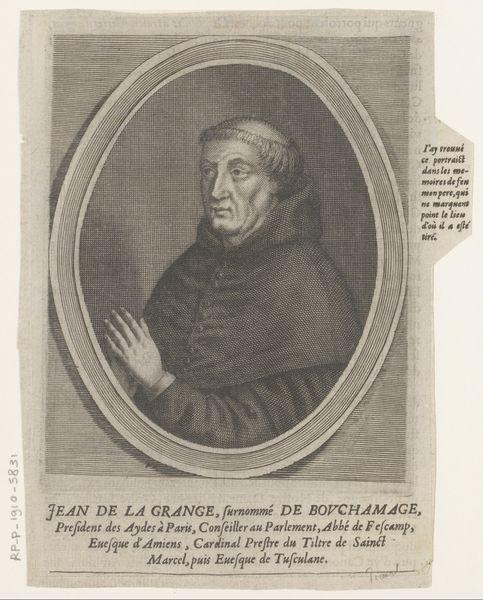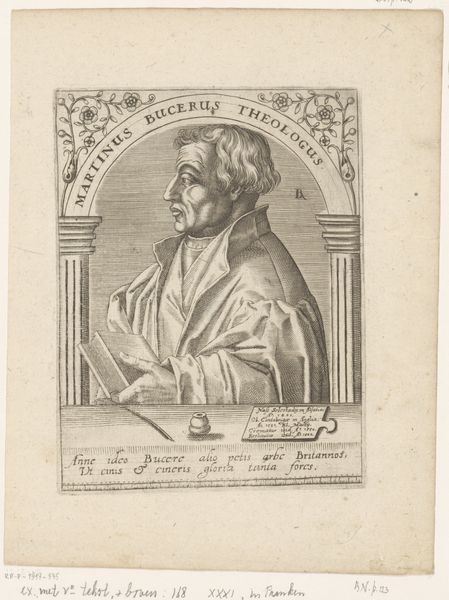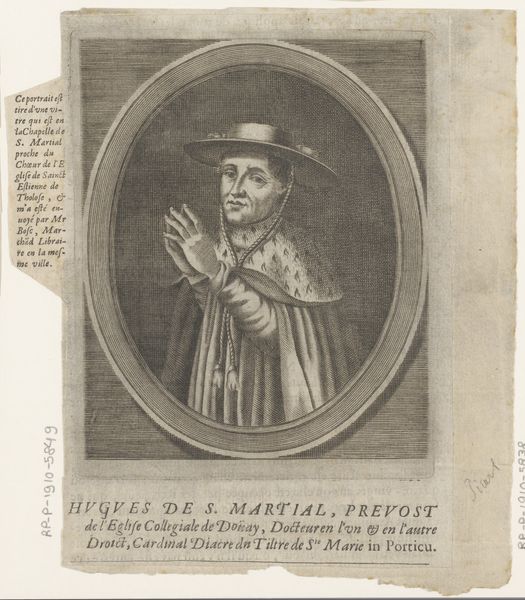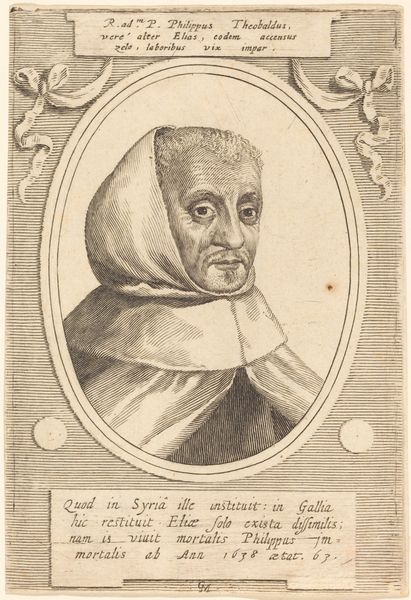
print, engraving
#
portrait
#
baroque
# print
#
old engraving style
#
engraving
Dimensions: height 174 mm, width 142 mm
Copyright: Rijks Museum: Open Domain
Editor: This is "Portret van Étienne de Suisy," made in 1660 by Etienne Picart, it’s an engraving. I find the subject's stern expression quite compelling, and I'm curious about the historical context surrounding portraits like this. How do you interpret this work, especially considering its public function? Curator: It’s important to consider who would commission, circulate, and consume a portrait like this. Printmaking allowed images of prominent figures to reach a wider audience, solidifying their status and disseminating specific narratives. This was a tool used by powerful elites within their social, cultural, and institutional circles. Look closely at the inscription, "Archidiacre de Bruges, Chancelier de France, Cardinal…" Editor: So, it’s about solidifying an image of power and status. Does the somewhat austere, almost somber, quality reinforce this? Curator: Precisely. Consider the relationship between the subject’s attire and societal expectations. His garb immediately identifies him as a figure of the church, projecting authority but also piety, fulfilling visual requirements. What impact do you think such imagery would have in an era marked by religious and political tensions? Editor: I see what you mean. It's a very controlled image, serving as a reminder of the church's influence during the Baroque period. Thank you, I learned a lot. Curator: My pleasure, it is always rewarding to see people engaging in such works to discover cultural power at work.
Comments
No comments
Be the first to comment and join the conversation on the ultimate creative platform.
